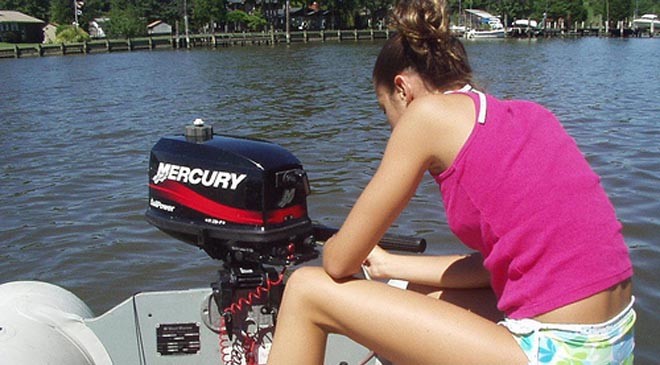Five simple checks to troubleshoot your outboard
by Des Ryan on 6 Aug 2012

Outboard - why the &%$#@ won’t it start? SW
You may know how to sail brilliantly, but that doesn't mean that you can solve problems with the outboard motor on your dinghy or tender, particularly if you are mechanically challenged. Here are five common problems and simple fixes which might get you back home one day(if you're a natural Mr/Ms Fixit, skip this story):
1.) Motor completely dead, won’t start:
If it is completely dead and you believe that the battery should have at least a little charge in it, here are some checks:
a. Make sure the throttle is in neutral
b. Is the ignition switch loose? This could be the problem, and is easily remedied by tightening the screws.
c. Do you have a 'battery selector switch?' - make sure it is turned to 'on'.
d. Is there a 'kill switch'? check that it is not disconnected.
2.) Dying boat battery:
If a boat grinds in trying to start, but the battery quickly withers and dies, at least you know the battery connections are making some contact. Still, check wire leads from the motor to the battery, and tighten them, since running bumpy water often can loosen battery lug nuts.
If lugs/nuts are corroded heavily, scrape off gunk with a knife or screwdriver (wire brush is best), and wipe clean. Check the connections again for tightness, and if possible spray on oil like WD40 to battery terminals to improve conductivity.
3.) Dead cranking battery:
The battery is cranking okay but the motor won't start. Trade it with another on-board 'hot' battery that may be used for an electric motor or other electronics. A set of battery cables is valuable boating equipment, and they may be used for 'jumping' a dead cranking battery with a charged one, even from another boat if you can summon on-the-water help.
Another possible solution to a dead battery may be a burned-out fuse. Know where boat fuses are located.
4.) Fouled propeller:
It's so easy to get a fishing line wrapped around a boat motor propeller, no matter the size of type of the motor. Monofilament line is bad enough, and fine, braided line is even worse. Line can work deeply into a propeller seal, and ruin a motor. So get it out soon, and thoroughly. Sometimes simply pulling on an end of a fishing line removes it from a propeller. The motor may need to be put in 'neutral' for a prop to spin freely as line is pulled.
With most weeds, even tough-stem bulrushes and pads, normally they can be removed by hand after a motor has been hauled up to expose its prop. However, occasionally fouled weeds or line are well out of reach of people in a boat. If you can reach shore, work the motor into the shallows, get out and remove fouled material.
In deep, open water, it may be easiest to free a big motor propeller from in the water. While wearing a life preserver, ease overboard and have a look at the prop.
5.) Engine overheats:
Never ignore this, as you can overheat and ruin an otherwise perfectly good engine. Check the water intake on the motor near the propeller. Usually it’s just weeds or it could be a plastic bag blocking water flow.
Occasionally, especially on smaller outboards, the water outflow nozzle at the bottom-rear of the cowling can become plugged, and must be opened for clean water flow.
This and the intake ports can be cleared of debris with heavy single-gauge wire (number 14 electrical) or even with heavy monofilament line (50 to 100 pound test).
If you want to link to this article then please use this URL: www.sail-world.com/100675